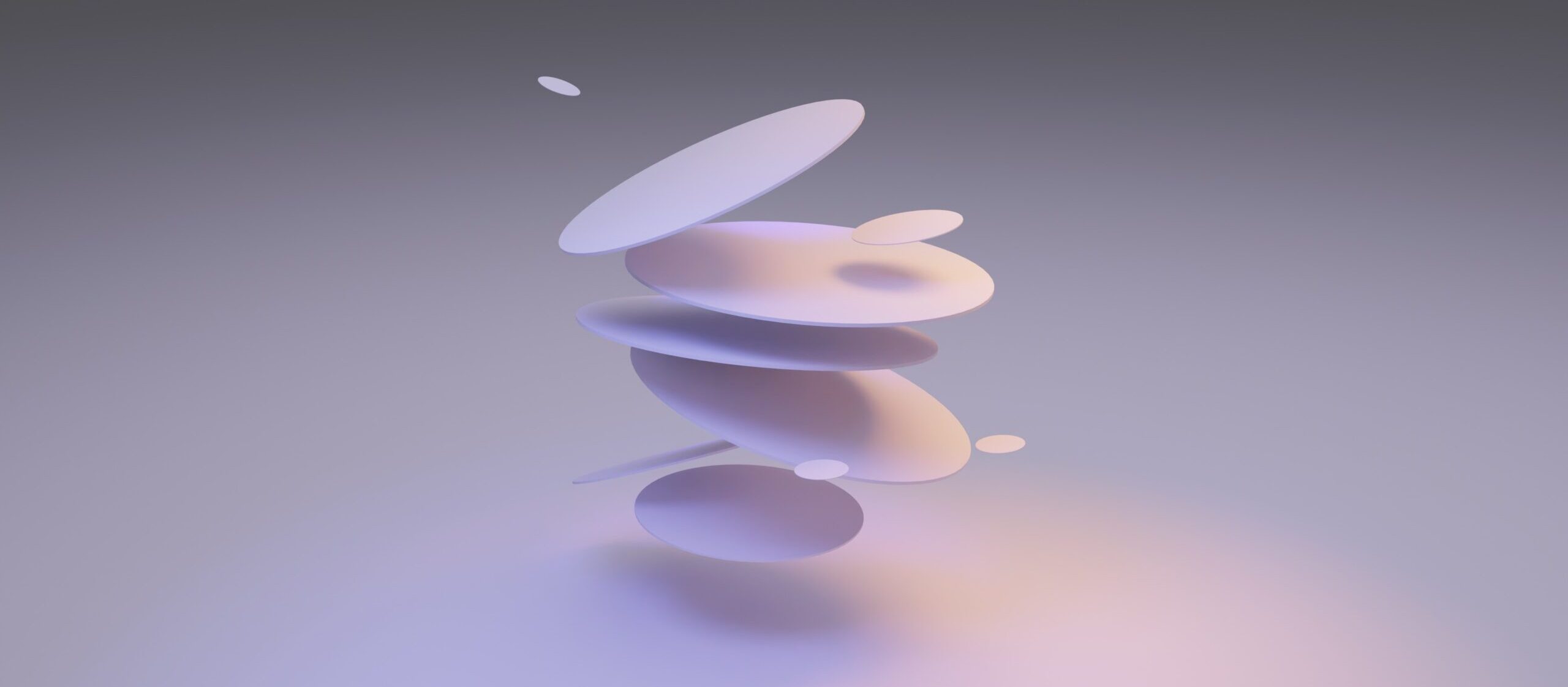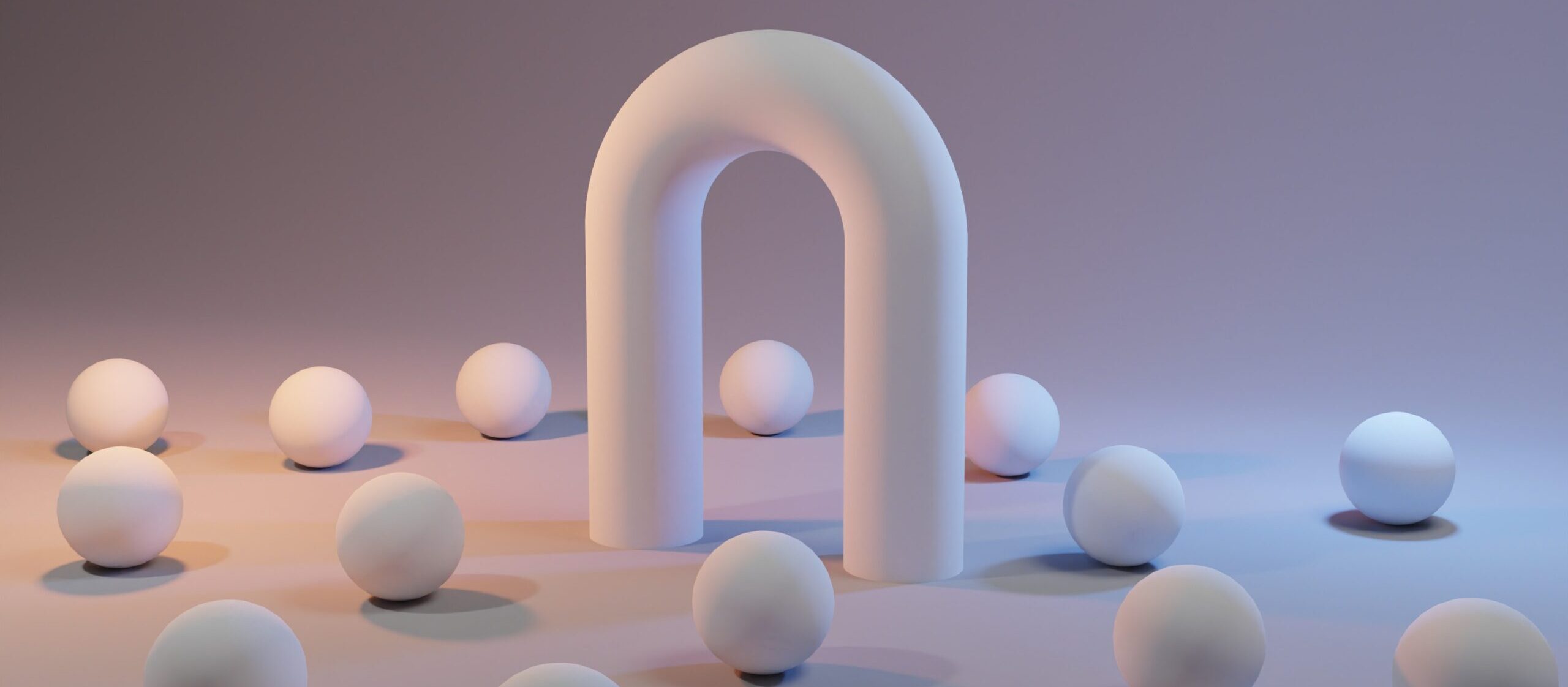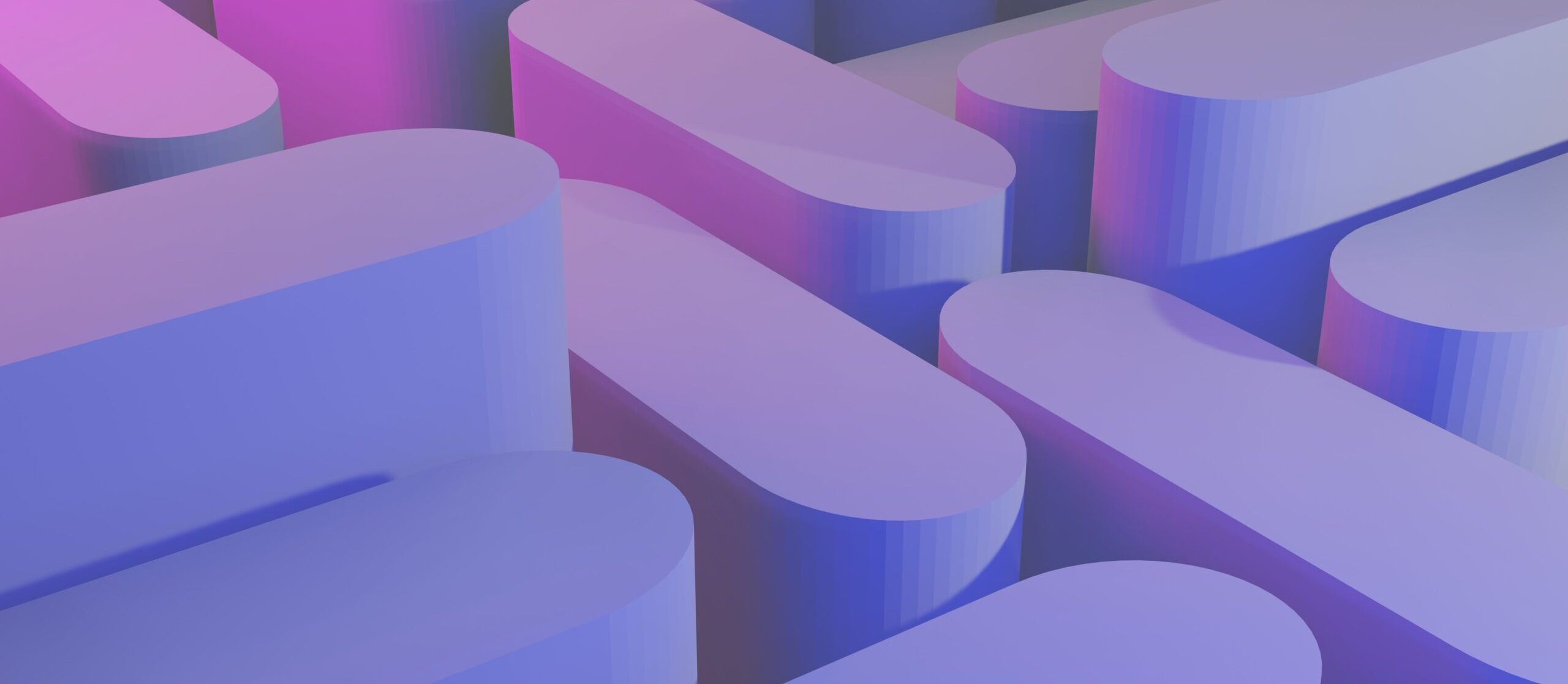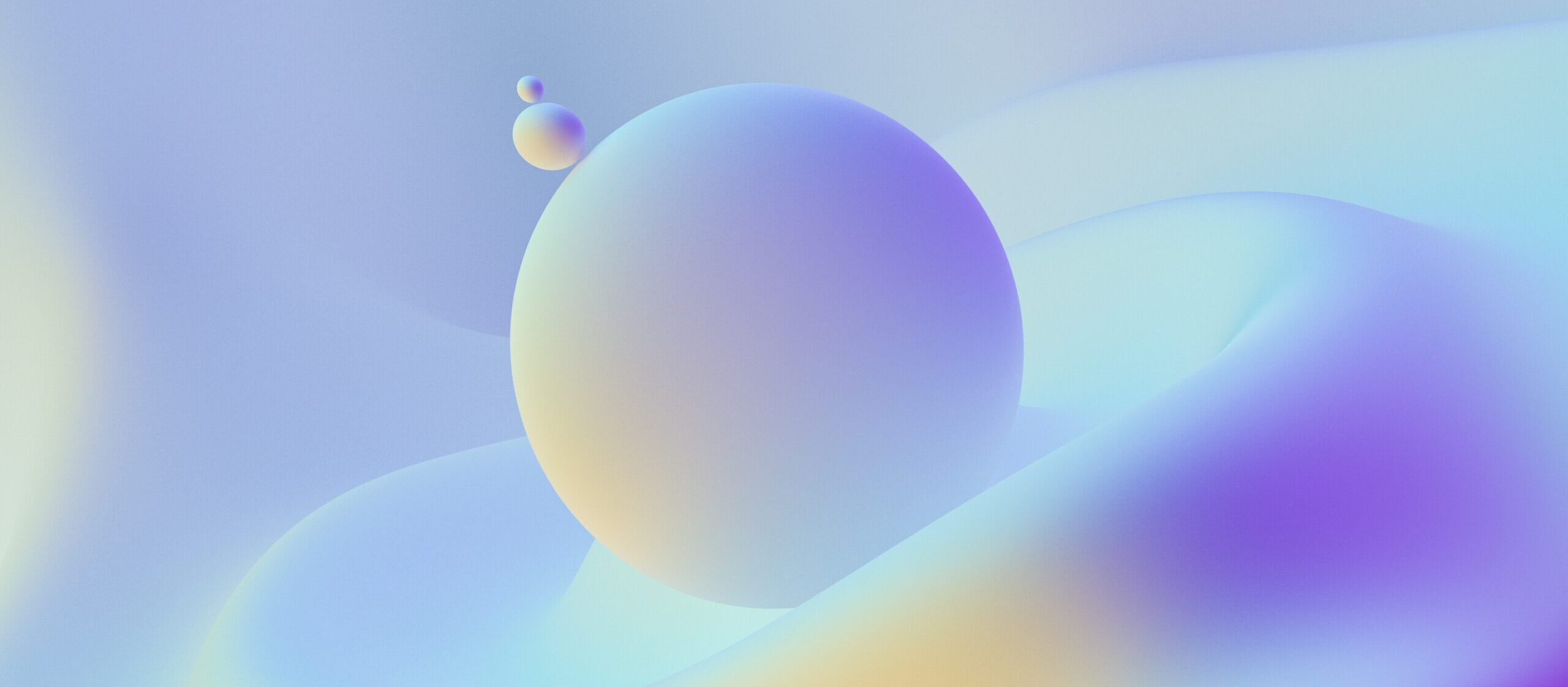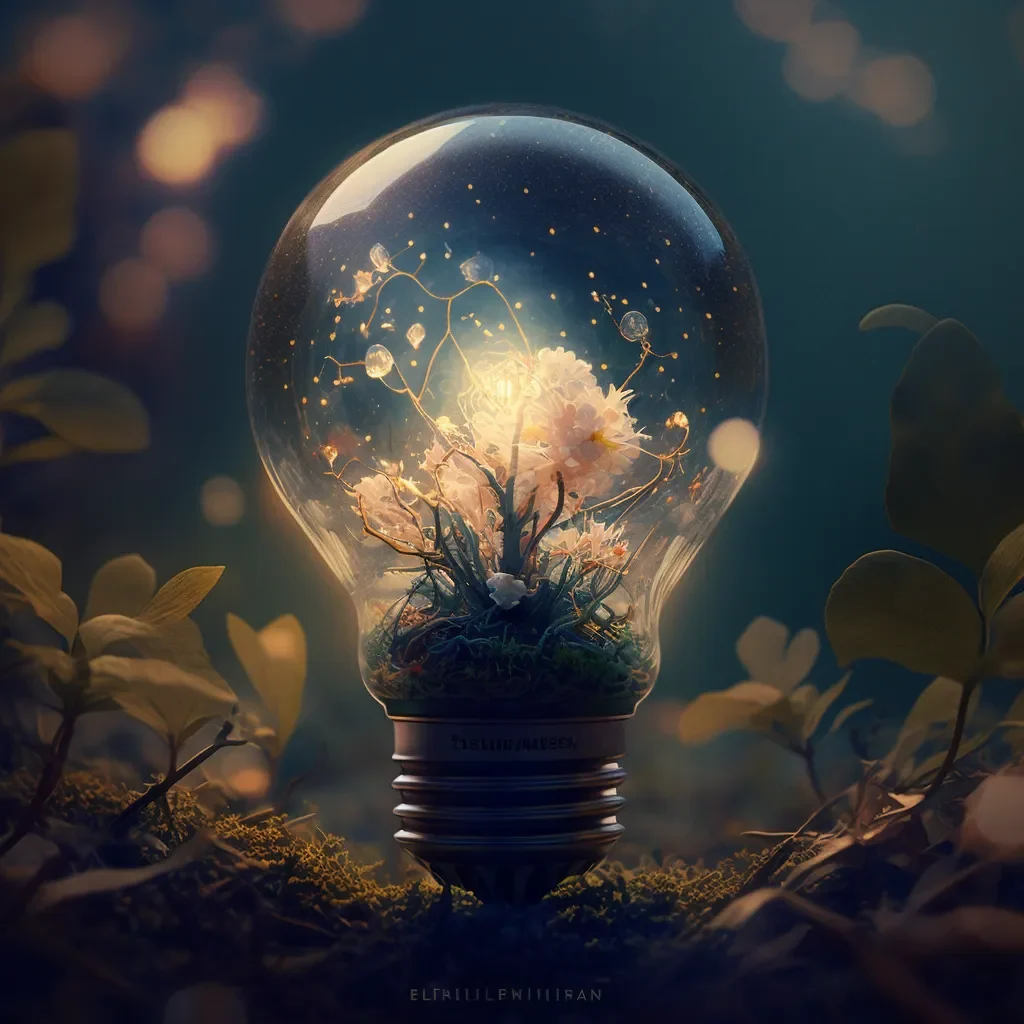Dmitrij Achelrod PhD
Dmitrij Achelrod PhD
Psilocybin and its natural source, over 200 species of psilocybin mushrooms and truffles, have gained the limelight not only of those seeking deep introspective experiences but also of the psychiatric community given their fascinating effects on the human psyche and their unprecedented potential for treating a wide range of psychiatric disorders.1 In particular, psilocybin has been investigated and shown to be effective in treating (treatment-resistant) depression, PTSD, anxiety disorders. Psilocybin’s effects are being investigated in many more disorders, such as autism, anorexia nervosa etc. However, as with any substance that alters brain chemistry, it’s crucial to understand how psilocybin interacts with psychiatric medications, such as antidepressants (SSRIs, SNRIs) or antipsychotics. What are potentially dangerous complications by combining psilocybin with antidepressants or other psychiatric drugs? How will it affect the subjective psychedelic experience? This expert article by Dmitrij Achelrod (PhD) delves into the complex interactions between psilocybin and various classes of psychiatric drugs, offering insights for those considering psilocybin in a retreat setting.
Please note that the Evolute Institute does not provide medical recommendations. Always consult with a licensed medical professional before taking psychedelics, especially before combining psychedelics with your psychiatric medications. However, in the name of risk prevention and education, to the best of our knowledge (November 2023), we highlight the most common classes of psychiatric medications (and some psychoactive substances) and their potential interactions with psilocybin. Our conclusion of the review of literature must not be applied to other psychedelics, in particular MDMA2 and ayahuasca3, as they have different routes of mechanisms and chemical compositions to psilocybin, with many more potential interactions.
1. Psilocybin – how does it work in the brain?
Psilocybin (for the more nerdy ones amongst us: 4-phosphoryloxy-N,N-dimethyltryptamine) is a psychoactive tryptamine that gets converted in the body to psilocin, which then can pass the blood-brain barrier. The pathway of action is psilocin activating a subtype of certain serotonin receptors in our brain. Serotonin’s chemical name is 5-hydroxtryptamine (5-HT) and the specific intracellular receptors that psilocin binds to are called 5-HT2A receptors.4 Serotonin is a very important neurotransmitter that is responsible not only for regulating mood, but also other vital function such as bowel movement and the dilatation and constriction of our blood vessels. The activation of these receptors leads to a cascade of changes in brain chemistry and ultimately in excitatory brain activity.6 The greater the percentage of 5HT2A receptors in the brain activated by psilocybin, the stronger the (subjectively perceived) effect of the psychedelic.7
1.1 How does psilocybin travel through the body?
When evaluating the potential of a substance to interact with other drugs, it is important to look at how the body absorbs, distributes, breaks down, and excretes the drug (known as pharmacokinetics). Compared to other psychoactive compounds, like MDMA or ayahuasca, psilocybin is less likely to lead to pharmacokinetic drug-drug interactions because its metabolic pathway mainly involves UGT1A10 (in the small intestine) and UGT1A9 (in the blood circulation)8 – two pathways that few other drugs act upon.9 Still, medications that can inhibit or induce these enzymes should be discontinued or tapered prior to administration of psilocybin. Some examples of UGT1A10/1A9 inhibitors are diclofenac (a non-steroidal anti-inflammatory drug) and probenecid (a uric acid reducer).10 In addition, psilocybin is not excreted by the kidneys, making it less dangerous for people with renal impairment.11
Taken in isolation, psilocybin is a very safe substance in terms of toxicity for the liver, central nervous system, or the heart.12,13 In fact, even compared to socially accepted substances like alcohol and tobacco, psilocybin is one of the safest psychoactive substances we know of that people take in non-medical settings.14
The only important remaining point then is that psilocybin acts on the serotonin system. The main issue is that several psychiatric drugs also directly influence the serotonin system, so the probability of some sort of drug-drug interaction when taken together with psilocybin can be heightened. In the following sections, we are going to explore specifically what this could mean for specific classes of psychiatric drugs.
2. Psilocybin and SSRIs (Selective Serotonin Reuptake Inhibitors)
2.1 How do SSRIs work?
SSRIs, or Selective Serotonin Reuptake Inhibitors, are a class of drugs primarily used as antidepressants in the treatment of major depressive disorder and anxiety disorders. They are some of the most commonly prescribed antidepressants due to their relative safety and lower side effect profile compared to older antidepressants.15You might have come across the following names, dependent if you live in the USA or in Europe:
- Fluoxetine: Often known by its original brand name Prozac, fluoxetine is one of the most well-known SSRIs. In Europe, it may also be found under other brand names or as a generic medication.
- Sertraline: Commonly known as Zoloft in the United States, sertraline may be found under this name or as a generic in Europe as well.
- Paroxetine: Known as Paxil in the U.S., in Europe, paroxetine might also be sold under the brand names Seroxat, Aropax, or as a generic.
- Citalopram: This SSRI is often known by the brand name Celexa in the U.S. In Europe, it might be found under the brand names Cipramil, Cipram, or as a generic.
- Escitalopram: Known as Lexapro in the U.S., in Europe, escitalopram is often sold under the brand name Cipralex, as well as other names or as a generic.
- Fluvoxamine: Commonly known as Luvox in the U.S., fluvoxamine might be found under the brand name Faverin, Dumyrox, or Fevarin in Europe.
Normally, after serotonin is released into the spaces between neurons (synapses), it is reabsorbed (reuptaken) into the releasing neuron, which reduces its activity in the brain. What SSRIs do is that they inhibit this reuptake process, allowing more serotonin to be available in the synaptic space, thereby enhancing its mood-stabilizing function.
2.2 What are Potential Interactions between SSRIs and psilocybin?
2.3 Serotonin Syndrome – dangerous but rare
This is why, as a measure of caution, participants in clinical studies of psilocybin have been usually asked to discontinue their SSRI use as a precondition for taking part in the trial.161718 Despite the potential severity of this interaction, the actual risk when combining psilocybin with SSRIs is not well-established and may be lower than initially thought. Only one randomized controlled trial has previously examined the psychedelic effect of psilocybin co-administered with an SSRI in healthy participants.19 Volunteers were pre-treatment with escitalopram for two weeks and were then administered psilocybin. The levels of adverse effects in the SSRI group were not higher than in the placebo (non-SSRI) group and no evidence of an increase in serotonergic toxicity was found. Interestingly, in contrast to the researchers’ hypothesis, Escitalopram reduced psilocybin-induced elevation in blood pressure and acute adverse effects. Furthermore, a small and exploratory study published in 2023 (with 24 participants) used psilocybin for treatment-resistant depression in patients taking a concomitant SSRI medication.20 Most treatment-related adverse reactions were mild (e.g. headache, elevated blood pressure) and resolved on the day of the onset. It is worthy to mention that increases in blood pressure and heart rate are typical for psilocybin.21 The authors claim that the resulting safety profile is comparable to that of psilocybin monotherapy.22,23
Summing up, while the serotonin syndrome is a hypothetical danger when combining psilocybin and SSRIs, the scientific evidence does not show high incidence rates of complications. Nonetheless, the informed psychonaut should at least be aware of the existence of the serotonin syndrome and know when to seek immediate medical attention for self and others: Signs and symptoms warranting emergency treatment include sudden and involuntary twitching of muscle groups (myoclonus), extreme and fluctuating vital signs, agitation or comatose mental state, muscle rigidity, pronounced hyperthermia (fever), and/or seizure activity.24
2.4 Do SSRIs weaken the psychedelic effect?
Another frequently mentioned concern is that SSRIs might attenuate the effect of psilocybin. Will you have “no trip” when ingesting psychedelics truffles or mushrooms? Unfortunately, there is a dearth of evidence regarding the question if chronic SSRI use reduces the subjective effects of psilocybin.
So, what evidence speaks in favor of that claim?
There are reports from surveys that suggest that the acute subjective psychedelic effects of psilocybin, and of another serotonergic compound, lysergic acid diethylamide (LSD), are reduced by intake of antidepressants in the preceding weeks or even months.252627 Another recent publication from February 2024, which reported the results of a prospective survey of over 160 individuals, found that people taking SSRI had a less intense subjective experience of psychedelics, less intense mystical events, and fewer emotional breakthrough experiences. Interestingly, the effect on well-being and depressive symptoms did not seem to be negatively affected by the concomittant SSRI intake.28 This dampening effect may last as long as 3 months following antidepressant discontinuation.29 Likewise, animal models showed that rodents under the parallel effect of SSRI and psilocybin had a reduced head-twitch response, a typical behavior of rodents when exposed to psilocybin.3031
The underlying theoretical mechanisms for these reports are twofold: On the one hand, it is believed that psilocin weakly inhibits the serotonin transporter site that is also the target for SSRIs.32 On the other hand, the effects of psilocybin could also be attenuated by SSRIs via an indirect pathway, e.g., by downregulation or desensitization of 5-HT receptors.33
However, high-quality evidence from controlled settings is scant. There is only one RCT investigating this question. In fact, Becker et al. (2022) showed in their RCT that SSRIs (Escitalopram) had no diminishing impact on the positive mood effect of psilocybin (e.g. experiencing “Oceanic Boundlessness”). At this point, we don’t know enough about the reason for these diverging observations. It might be that there are unknown mechanisms downstream of 5-HT2A receptor signaling that can compensate for any effects that chronic SSRI treatment might have on the psychedelic response. Or, rather pragmatically, it might also be that the RCT above mentioned by Becker et al. did not grant a long-enough pretreatment period (participants received SSRIs for only 2 weeks).
In summary, we need more research to reach conclusive results on this question.
3. Psilocybin and SNRIs (Serotonin-Norepinephrine Reuptake Inhibitors)
3.1 How do SNRIs work?
Serotonin-Norepinephrine Reuptake Inhibitors (SNRIs) are a class of antidepressant drugs used to treat major depressive disorder, anxiety disorders, and certain chronic pain conditions. They are similar to Selective Serotonin Reuptake Inhibitors (SSRIs) but have a slightly broader mechanism of action. SNRIs work by inhibiting the reuptake of two important neurotransmitters in the brain: serotonin and norepinephrine. This inhibition results in an increase in the levels of these neurotransmitters in the synaptic cleft, the space between neurons where communication occurs. Norepinephrine, also known as noradrenaline, is also a neurotransmitter that is associated with alertness, energy, and the body’s “fight or flight” response. Its increased availability can help improve attention, energy, and potentially alleviate pain. 34
Some common SNRI drugs are:
- Venlafaxine: In Europe, Venlafaxine is often marketed under the brand name Effexor, similar to the U.S. It may also be available under various generic names depending on the country.
- Duloxetine: Known as Cymbalta in the U.S., Duloxetine is typically available under the same brand name in Europe. It might also be found under generic names in some countries.
- Desvenlafaxine: This SNRI, known as Pristiq in the U.S., may be available under the same brand name in Europe, or possibly under different names or as a generic.
- Milnacipran: Unlike in the U.S., where Milnacipran (used for fibromyalgia) is known as Savella, in Europe, it is more commonly marketed under the brand name Ixel for the treatment of depression.
- Levomilnacipran: Known as Fetzima in the U.S., Levomilnacipran may not be as widely available in Europe, and its brand name can vary if it is available.
3.2 Potential Interaction between SNRI and psilocybin
There is a paucity of evidence regarding the interaction between psilocybin and SNRIs. It is mostly assumed though that the overlapping effects are very similar to the ones with SSRI, i.e. a potentially increased risk for serotonin syndrome and attenuated subjective effects of psilocybin. 35
4. Psilocybin and MAOIs (Monoamine Oxidase Inhibitors)
4.1 How do MAOIs work?
MAOIs, or Monoamine Oxidase Inhibitors, are a class of antidepressant drugs that were among the first types of antidepressants developed. They work by inhibiting the activity of an enzyme called monoamine oxidase. This enzyme is involved in breaking down neurotransmitters such as serotonin, norepinephrine, and dopamine in the brain. By inhibiting this enzyme, MAOIs increase the levels of these neurotransmitters, which can help improve mood and alleviate symptoms of depression. Due to their dietary restrictions, potential for significant drug interactions, and the development of newer antidepressants with fewer side effects, MAOIs are not as commonly prescribed as they once were. However, they remain an important treatment option for certain individuals, particularly those who have not responded to other antidepressants.36
Some common MAOI drugs are:
- Phenelzine: This MAOI is often known by the brand name Nardil. It’s used for the treatment of depression and anxiety disorders.
- Tranylcypromine: Marketed under the brand name Parnate, Tranylcypromine is another MAOI used for depression.
- Isocarboxazid: This MAOI is known by the brand name Marplan. It’s also used for treating depression.
- Moclobemide: Although technically a reversible inhibitor of monoamine oxidase A (RIMA) and considered somewhat safer than traditional MAOIs, Moclobemide is often grouped with this class. It’s marketed under various brand names, including Aurorix and Manerix.
- Selegiline: Primarily used in the treatment of Parkinson’s disease, Selegiline is also an MAOI. It’s known by brand names like Eldepryl and Zelapar. There’s also a transdermal patch form known as Emsam.
4.2 Potential Interaction between MAOI and psilocybin
MAOIs interfere with psilocybin degradation. However, psilocybin appears to be relatively safe taken at the same time with MAOIs, i.e. it is unlikely to cause a serotonin syndrome or serotonin toxicity. 37 This safety is likely because psilocybin doesn’t increase serotonin levels in the brain’s synapses (the gaps between nerve cells where chemical messages are passed).3839 When psilocybin and MAOIs are acutely taken together (i.e. MAOIs are not taken chronically), this combination might make the psychedelic effects of psilocybin last longer or feel stronger. People sometimes combine psilocybin mushrooms with harmala alkaloids (e.g. Syrian rue) and call it “psilohuasca”, since it is mimicking the hermaline that is present in ayahuasca but not in mushrooms or truffles (although a recent study challenges that claim and shows that Psilocybe mushrooms naturally have ayahuasca-like MAOIs).40 However, there is no safety data available for this homemade combination and its use cannot be recommended.
Paradoxically, when MAOIs are taken over the course of weeks or months, they seem to reduce the effect of psilocybin, not increase it. This could be because of a few reasons: there might be more serotonin naturally present in the brain that competes with the psychedelics, differences in how MAOIs affect the brain and the rest of the body, or changes in brain receptors after long-term MAOI use.4142
A word of caution: Combining MDMA and MAOIs (as well as SSRIs and MAOIs) can be fatally dangerous because of a higher probability of serotonin syndrome.
5. Psilocybin and Tricyclic Antidepressants (TCA) / Tetracyclic Antidepressants (TeCA)
TCA stands for Tricyclic Antidepressants, and TeCA stands for Tetracyclic Antidepressants. Both are classes of antidepressant drugs used primarily in the treatment of major depressive disorder, although they are also used for a range of other psychiatric and neurological conditions. TCAs are used for chronic pain, migraine prophylaxis, and certain anxiety disorders.
They are sometimes used in cases of insomnia due to their sedative effects. They are generally not the first line of treatment for depression due to their side effect profiles. Despite being among the older classes of antidepressants, they are still used, particularly in cases where newer antidepressants, like SSRIs (Selective Serotonin Reuptake Inhibitors), are not effective. 43
Here are some of the more commonly used TCAs and TeCAs in Europe:
TCAs :
- Amitriptyline: Often used for its efficacy in treating major depression, chronic pain, and migraine prophylaxis.
- Clomipramine: Particularly known for its use in treating Obsessive-Compulsive Disorder (OCD) as well as depression.
- Nortriptyline: A secondary amine TCA, often used for depression, chronic pain, and sometimes for smoking cessation.
- Imipramine: Used for depression and also for certain anxiety disorders.
- Doxepin: Commonly used for depression and anxiety, and in lower doses, it is used for insomnia due to its sedative properties.
TeCAs:
- Mirtazapine (Remeron): It’s widely used for depression, especially when symptoms include insomnia or significant weight loss, as it can help with sleep and increase appetite.
- Maprotiline: Used for major depression, it has a structure and mechanism of action similar to TCAs.
5.1 How do TCAs / TeCAs work?
TCA: TCAs primarily work by inhibiting the reuptake of two neurotransmitters in the brain: serotonin and norepinephrine. This increases the levels of these neurotransmitters in the synaptic cleft (the space between neurons), which is thought to contribute to their antidepressant effects. They also have varying degrees of affinity for other neurotransmitter receptors, including histamine, acetylcholine, and dopamine receptors, which accounts for many of their side effects.44
TeCA: Similar to TCAs, TeCAs work by altering neurotransmitter levels in the brain, but they tend to have a slightly different pharmacological profile. They primarily affect norepinephrine and, to a lesser extent, serotonin reuptake. They also interact with various receptor types, but often with a different profile compared to TCAs, which can lead to different side effect profiles. 45
5.2 Potential Interaction between psilocybin and TCAs / TeCAs
Unfortunately, there is virtually no evidence available. We could identify only one study, which found that tricyclic antidepressants (TCAs) may increase the intensity of the psychedelic experience (in the case of LSD).46 The underlying causes might be an enhanced serotonin neurotransmission which might be fuelled by postsynaptic receptor sensitization and heightened dopamine levels.
6. Psilocybin and Serotonin Receptor Agonists (SRAs) for Anxiety and Migraines
6.1 How do SRAs work?
Serotonin agonists are a class of indolealkylamine (IAA) drugs that specifically target and activate serotonin receptors in the brain and body. By activating serotonin receptors, these drugs can mimic or enhance the effects of serotonin. There are several subtypes of serotonin receptors (like 5-HT1A, 5-HT1B, 5-HT2A, etc.), and different serotonin agonists are designed to target specific subtypes. This selective activation allows for more targeted therapeutic effects and can help in reducing side effects. Serotonin agonists bind to serotonin receptors in the place of serotonin and activate these receptors, thereby producing effects similar to those of increased serotonin levels.
The effects of serotonin agonists depend on which receptors they activate. For example, agonists that target 5-HT1A receptors are often used for their anxiolytic (anti-anxiety) and antidepressant effects, while those targeting 5-HT1B/1D receptors are commonly used in the treatment of migraines.47
Some common SRAs are:
- Buspirone (Anxiolytic): Buspirone is primarily used for the treatment of generalized anxiety disorder (GAD). It’s a partial agonist of the serotonin 5-HT1A receptor. Buspar and Buspiron are common brand names. It can help reduce anxiety without the sedative effects often associated with benzodiazepines.
- Ergotamine (Antimigraine): Ergotamine is part of a class of drugs known as ergot alkaloids, used for the treatment of migraine headaches. It might be found under names like Ergomar, Cafergot (when combined with caffeine), and Migergot.
- Triptans (Antimigraine): Triptans are a class of serotonin receptor agonists specifically used for migraine attacks. They are selective for the 5-HT1B and 5-HT1D receptors. They work by constricting blood vessels and inhibiting the release of certain peptides, thereby relieving headache and other symptoms associated with migraines. Sumatriptan, one of the most well-known triptans, is available under brand names like Imigran, Imitrex, and Sumatriptan Succinate.
- Technically, most of the popular psychedelics also count as IAA, such as lysergic acid amides such as d-lysergic acid diethylamide (LSD) and ergine (LSA), tryptamines such as psilocybin, N,N-dimethyltryptamine (DMT), bufotenine, 5-methoxy-N,N-dimethyltryptamine (5-MeO-DMT), ibogaine, and β-carbolines such as harman, harmaline and harmine
6.2 Potential Interaction between psilocybin and SRAs
As these IAA drugs bind with high affinity to certain serotonin receptors, they might stand in competition with psychedelics for receptors. Pokorny et al. (2016) found in their RCT with healthy volunteers that buspirone reduced visual effects of psilocybin. In contrast, Ergotamine had no effect on psilocybin-induced subjective effects, perhaps due to different functional selectivity profiles at these receptors.48
7. Psilocybin and Antipsychotics
Antipsychotics, also known as neuroleptics, are a class of medication primarily used to manage psychosis, including delusions, hallucinations, paranoia, or disordered thought, which are typical in psychiatric conditions such as schizophrenia and bipolar disorder. They can also be used for other purposes, such as the treatment of severe anxiety, agitation, and certain mood disorders.49
7.1 How do Antipsychotics work?
The exact mechanism of action of antipsychotics is complex and not fully understood, but they are known to work primarily by altering the effects of neurotransmitters in the brain, particularly dopamine.
- Dopamine Hypothesis: Many antipsychotics exert their effects by blocking dopamine receptors, particularly the D2 receptors. The dopamine hypothesis of psychosis suggests that an overactivity of dopamine in certain brain regions contributes to psychotic symptoms. By blocking these receptors, antipsychotics reduce dopamine activity, which can help alleviate symptoms of psychosis.
- Other Neurotransmitters: Besides dopamine, antipsychotics can also affect other neurotransmitter systems, including serotonin, norepinephrine, acetylcholine, and histamine receptors. This action on multiple neurotransmitters is particularly true for newer, second-generation antipsychotics.
7.1.1 Types of Antipsychotics:
Antipsychotics are generally divided into two categories:
- First-Generation Antipsychotics (FGAs): Also known as typical antipsychotics, these include drugs like haloperidol, chlorpromazine, and fluphenazine. They primarily work by blocking dopamine receptors but are often associated with a higher risk of neurological side effects, such as extrapyramidal symptoms (movement disorders) and tardive dyskinesia (involuntary repetitive movements).
- Second-Generation Antipsychotics (SGAs): Also known as atypical antipsychotics, these include drugs like risperidone, olanzapine, quetiapine, and aripiprazole. They tend to have a broader spectrum of action, affecting both dopamine and serotonin receptors. SGAs are generally preferred due to their lower risk of certain side effects, but they can have their own side effects, such as weight gain and increased risk of diabetes.50
7.2 Potential Interaction between Antipsychotics and psilocybin
The evidence on the effects of psilocybin on antipsychotics is scarce. This is because, in very rare cases of genetic predisposition / family history of psychiatric disorders, psychedelics might trigger a psychotic episode. In people with psychotic or schizoid disorders, psychedelics might potentially exacerbate symptoms or lead to destabilization, regardless of concurrent antipsychotic use.5152535455
This is why most clinical trials have shunned to include participants with an elevated risk for developing these conditions. Hence, the relationship between psilocybin and antipsychotic medications has not been well elucidated.
Moreover, the potential interaction between psilocybin and antipsychotic medications is a complex area, primarily because of the differing mechanisms by which these substances affect the brain. Psilocybin is a psychedelic compound that primarily exerts its effects through the serotonin system, while antipsychotics mainly target the dopamine system, although many also affect serotonin and other neurotransmitter systems.
In total, three RCTs so far have been published on that topic. An early study from 1967 found that the typical antipsychotic chlorpromazine (which antagonizes dopamine D2 receptors as well as 5HT2A receptors) reduced visual effects of psilocybin.56
Similarly, risperidone led to an attenuation of all measured psilocybin-induced alterations in consciousness.57 By the way of contrast, haloperidol had no significant effects on visual perceptions, but increased anxiety.58
8. Psilocybin and Alcohol
8.1 How does Alcohol work in the brain?
Alcohol, specifically ethanol, which is the type of alcohol found in alcoholic beverages, is a psychoactive substance that affects the central nervous system. Its effects on the body and brain are complex and vary greatly depending on a range of factors, including the amount consumed, the rate of consumption, the drinker’s body weight, metabolism, and tolerance to alcohol.59
Alcohol’s primary mechanism of action is its effect on various neurotransmitter systems in the brain. It modulates the activity of these neurotransmitters, leading to its various psychological and physiological effects:
- GABA (Gamma-Aminobutyric Acid): Alcohol enhances the effect of GABA, an inhibitory neurotransmitter. By increasing GABA activity, alcohol promotes relaxation, reduced anxiety, and sedation. This is a primary reason for the initial feelings of relaxation and lowered inhibitions associated with alcohol consumption.
- Glutamate: Alcohol inhibits the effects of glutamate, which is an excitatory neurotransmitter. This inhibition can lead to further sedative effects and impair cognitive functions, such as memory and judgment.
- Dopamine: Alcohol increases dopamine levels in the brain’s reward system, contributing to its addictive properties. The release of dopamine during alcohol consumption produces feelings of pleasure and satisfaction
8.2 Potential Interaction between alcohol and psilocybin
To our best knowledge, only one study examined the interaction between alcohol and psilocybin. The authors found that subjective effects of alcohol were neutralized by psilocybin in 60 percent of the cases, but the subjective effects of psilocybin were mostly unchanged60. (Halman 2023).
Despite the lacking evidence, the consensus of most experts is not to mix alcohol with psilocybin, for it can have unpredictable effects, both psychologically and physically. While psilocybin can be used to successfully treat alcohol addiction616263, it should not be consumed concomitantly (= at the same time).
Concluding remarks
The main risk of psilocybin use is psychological safety, not physiological safety as it is for most classic drugs (e.g., opioids, sedatives, stimulants.64 However, when psilocybin is combined with other drugs, users must take into account potentially harmful interactions. So far, the clinical evidence shows that the risks of severe complications, such as serotonin syndrome, are very rare for psilocybin. A recent review concluded that “serotonergic psychotropics that do not contain MAOIs are low risk in combination with psychedelics that also do not contain MAOIs.”65Bigger risks exist when overdosing serotonergic drugs (e.g. SSRI/SNRI or MDMA) or combining them with MAOIs. Ayahuasca, for instance, because of its naturally occurring MAOI, has higher interaction potential with SSRIs than psilocybin. MDMA is also considered more dangerous. However, insufficient evidence does not mean that complications do not exist for psilocybin. Hence, it is always recommended to err on the side of caution and not combine psilocybin with psychiatric medications in recreational or retreat settings without appropriate clinical guidance. Participants should always discuss their eligibility with licensed medical doctors and, in case of doubt, decide on a case-by-case basis, weighing the potential risks and benefits of a psychedelic experience. Note that the discontinuation of psychiatric medication might worsen symptoms or lead to a destabilization of the individual. For obvious ethical reasons, the Evolute Institute will never recommend applicants to discontinue their psychiatric medications without discussing it with their physicians / psychiatrists. The Evolute Institute takes the safety of their participants very seriously: all applicants undergo a written and verbal medical screening, where, of course, medications are checked by a medical doctor. For the reasons outlined in this article, the Evolute Institute currently does not admit applicants with concomitant psychiatric medication.
Bibliography on Psilocybin-Drug-Interactions
- Nichols DE. Psilocybin: from ancient magic to modern medicine. J Antibiot (Tokyo). 2020;73(10):679-686. https://doi.org/10.1038/s41429-020-0311-8
- Sarparast A, Thomas K, Malcolm B, Stauffer CS. Drug-drug interactions between psychiatric medications and MDMA or psilocybin: a systematic review. Psychopharmacology (Berl). 2022;239(6):1945-1976. https://doi.org/10.1007/s00213-022-06083-y Accessed November 12, 2023 https://www.ncbi.nlm.nih.gov/pmc/articles/PMC9177763/
- Callaway JC, Grob CS. Ayahuasca preparations and serotonin reuptake inhibitors: a potential combination for severe adverse interactions. J Psychoactive Drugs. 1998;30(4):367-369. https://doi.org/10.1080/02791072.1998.10399712
- Johnson MW, Hendricks PS, Barrett FS, Griffiths RR. Classic psychedelics: An integrative review of epidemiology, therapeutics, mystical experience, and brain network function. Pharmacol Ther. 2019;197:83-102. https://doi.org/10.1016/j.pharmthera.2018.11.010
- Nichols DE. Psychedelics. Barker EL, ed. Pharmacol Rev. 2016;68(2):264-355. https://doi.org/10.1124/pr.115.011478 Accessed March 3, 2022 https://pharmrev.aspetjournals.org/content/68/2/264[/efn_note]
Psilocybin's affinity for these receptors can influence various neural circuits, usually altering mood, perception, and cognition. In turn, this activation is thought to lead to the psychedelic experience and potential therapeutic effects. The subjective effects of psilocybin usually begin 20–40 min after ingestion, peak after 60–90 min, and have a total duration of around 6 h.5Hasler F, Grimberg U, Benz MA, Huber T, Vollenweider FX. Acute psychological and physiological effects of psilocybin in healthy humans: a double-blind, placebo-controlled dose-effect study. Psychopharmacology (Berl). 2004;172(2):145-156. https://doi.org/10.1007/s00213-003-1640-6
- Madsen MK, Fisher PM, Burmester D, et al. Psychedelic effects of psilocybin correlate with serotonin 2A receptor occupancy and plasma psilocin levels. Neuropsychopharmacol Off Publ Am Coll Neuropsychopharmacol. 2019;44(7):1328-1334. https://doi.org/10.1038/s41386-019-0324-9
- Manevski N, Kurkela M, Höglund C, et al. Glucuronidation of psilocin and 4-hydroxyindole by the human UDP-glucuronosyltransferases. Drug Metab Dispos Biol Fate Chem. 2010;38(3):386-395. https://doi.org/10.1124/dmd.109.031138
- Liu Y, She M, Wu Z, Dai R. The inhibition study of human UDP-glucuronosyltransferases with cytochrome P450 selective substrates and inhibitors. J Enzyme Inhib Med Chem. 2011;26(3):386-393. https://doi.org/10.3109/14756366.2010.518965
- MacCallum CA, Lo LA, Pistawka CA, Deol JK. Therapeutic use of psilocybin: Practical considerations for dosing and administration. Front Psychiatry. 2022;13:1040217. https://doi.org/10.3389/fpsyt.2022.1040217
- Brown RT, Nicholas CR, Cozzi NV, et al. Pharmacokinetics of Escalating Doses of Oral Psilocybin in Healthy Adults. Clin Pharmacokinet. 2017;56(12):1543-1554. https://doi.org/10.1007/s40262-017-0540-6
- Schlag AK, Aday J, Salam I, Neill JC, Nutt DJ. Adverse effects of psychedelics: From anecdotes and misinformation to systematic science. J Psychopharmacol (Oxf). 2022;36(3):258-272. https://doi.org/10.1177/02698811211069100 Accessed March 11, 2022 https://doi.org/10.1177/02698811211069100
- Leonard JB, Anderson B, Klein-Schwartz W. Does getting high hurt? Characterization of cases of LSD and psilocybin-containing mushroom exposures to national poison centers between 2000 and 2016. J Psychopharmacol Oxf Engl. 2018;32(12):1286-1294. https://doi.org/10.1177/0269881118793086
- Nutt DJ, King LA, Phillips LD, Independent Scientific Committee on Drugs. Drug harms in the UK: a multicriteria decision analysis. Lancet Lond Engl. 2010;376(9752):1558-1565. https://doi.org/10.1016/S0140-6736(10)61462-6
- Stahl SM. Mechanism of action of serotonin selective reuptake inhibitors. Serotonin receptors and pathways mediate therapeutic effects and side effects. J Affect Disord. 1998;51(3):215-235. https://doi.org/10.1016/s0165-0327(98)00221-3
- Pearson C, Siegel J, Gold JA. Psilocybin-assisted psychotherapy for depression: Emerging research on a psychedelic compound with a rich history. J Neurol Sci. 2022;434:120096. https://doi.org/10.1016/j.jns.2021.120096
- Vargas AS, Luís, Barroso M, Gallardo E, Pereira L. Psilocybin as a New Approach to Treat Depression and Anxiety in the Context of Life-Threatening Diseases-A Systematic Review and Meta-Analysis of Clinical Trials. Biomedicines. 2020;8(9):331. https://doi.org/10.3390/biomedicines8090331
- Goodwin GM, Aaronson ST, Alvarez O, et al. Single-Dose Psilocybin for a Treatment-Resistant Episode of Major Depression. N Engl J Med. 2022;387(18):1637-1648. https://doi.org/10.1056/NEJMoa2206443 Accessed November 12, 2023
- Becker AM, Holze F, Grandinetti T, et al. Acute Effects of Psilocybin After Escitalopram or Placebo Pretreatment in a Randomized, Double-Blind, Placebo-Controlled, Crossover Study in Healthy Subjects. Clin Pharmacol Ther. 2022;111(4):886-895. https://doi.org/10.1002/cpt.2487
- Goodwin GM, Croal M, Feifel D, et al. Psilocybin for treatment resistant depression in patients taking a concomitant SSRI medication. Neuropsychopharmacol Off Publ Am Coll Neuropsychopharmacol. 2023;48(10):1492-1499. https://doi.org/10.1038/s41386-023-01648-7
- Thomas K, Malcolm B, Lastra D. Psilocybin-Assisted Therapy: A Review of a Novel Treatment for Psychiatric Disorders. J Psychoactive Drugs. 2017;49(5):446-455. https://doi.org/10.1080/02791072.2017.1320734
- Carhart-Harris RL, Bolstridge M, Rucker J, et al. Psilocybin with psychological support for treatment-resistant depression: an open-label feasibility study. Lancet Psychiatry. 2016;3(7):619-627. https://doi.org/10.1016/S2215-0366(16)30065-7
- Goodwin GM, Aaronson ST, Alvarez O, et al. Single-Dose Psilocybin for a Treatment-Resistant Episode of Major Depression. N Engl J Med. 2022;387(18):1637-1648. https://doi.org/10.1056/NEJMoa2206443 Accessed November 12, 2023 https://doi.org/10.1056/NEJMoa2206443
- Malcolm B, Thomas K. Serotonin toxicity of serotonergic psychedelics. Psychopharmacology (Berl). 2022;239(6):1881-1891. https://doi.org/10.1007/s00213-021-05876-x
- Bonson KR, Murphy DL. Alterations in responses to LSD in humans associated with chronic administration of tricyclic antidepressants, monoamine oxidase inhibitors or lithium. Behav Brain Res. 1996;73(1-2):229-233. https://doi.org/10.1016/0166-4328(96)00102-7
- Bonson KR, Buckholtz JW, Murphy DL. Chronic administration of serotonergic antidepressants attenuates the subjective effects of LSD in humans. Neuropsychopharmacol Off Publ Am Coll Neuropsychopharmacol. 1996;14(6):425-436. https://doi.org/10.1016/0893-133X(95)00145-4
- Gukasyan N, Griffiths RR, Yaden DB, Antoine DG, Nayak SM. Attenuation of psilocybin mushroom effects during and after SSRI/SNRI antidepressant use. J Psychopharmacol Oxf Engl. 2023;37(7):707-716. https://doi.org/10.1177/02698811231179910
- J. Barbut Siva et al., ‘Interactions between classic psychedelics and serotonergic antidepressants: Effects on the acute psychedelic subjective experience, well-being and depressive symptoms from a prospective survey study’, J Psychopharmacol, p. 02698811231224217, Jan. 2024, doi: 10.1177/02698811231224217.
- Gukasyan N, Griffiths RR, Yaden DB, Antoine DG, Nayak SM. Attenuation of psilocybin mushroom effects during and after SSRI/SNRI antidepressant use. J Psychopharmacol Oxf Engl. 2023;37(7):707-716. https://doi.org/10.1177/02698811231179910
- Metz A, Heal DJ. In mice repeated administration of electroconvulsive shock or desmethylimipramine produces rapid alterations in 5-HT2-mediated head-twitch responses and cortical 5-HT2 receptor number. Eur J Pharmacol. 1986;126(1-2):159-162. https://doi.org/10.1016/0014-2999(86)90754-5
- Goodwin GM, Green AR, Johnson P. 5-HT2 receptor characteristics in frontal cortex and 5-HT2 receptor-mediated head-twitch behaviour following antidepressant treatment to mice. Br J Pharmacol. 1984;83(1):235-242. https://doi.org/10.1111/j.1476-5381.1984.tb10140.x
- Rickli A, Moning OD, Hoener MC, Liechti ME. Receptor interaction profiles of novel psychoactive tryptamines compared with classic hallucinogens. Eur Neuropsychopharmacol J Eur Coll Neuropsychopharmacol. 2016;26(8):1327-1337. https://doi.org/10.1016/j.euroneuro.2016.05.001
- Yamauchi M, Miyara T, Matsushima T, Imanishi T. Desensitization of 5-HT2A receptor function by chronic administration of selective serotonin reuptake inhibitors. Brain Res. 2006;1067(1):164-169. https://doi.org/10.1016/j.brainres.2005.10.075
- Lambert O, Bourin M. SNRIs: mechanism of action and clinical features. Expert Rev Neurother. 2002;2(6):849-858. https://doi.org/10.1586/14737175.2.6.849
- Gukasyan N, Griffiths RR, Yaden DB, Antoine DG, Nayak SM. Attenuation of psilocybin mushroom effects during and after SSRI/SNRI antidepressant use. J Psychopharmacol Oxf Engl. 2023;37(7):707-716. https://doi.org/10.1177/02698811231179910
- Sub Laban T, Saadabadi A. Monoamine Oxidase Inhibitors (MAOI). In: StatPearls. StatPearls Publishing; 2023. Accessed November 12, 2023 http://www.ncbi.nlm.nih.gov/books/NBK539848/
- 27. Carhart-Harris RL, Bolstridge M, Rucker J, et al. Psilocybin with psychological support for treatment-resistant depression: an open-label feasibility study. Lancet Psychiatry. 2016;3(7):619-627. https://doi.org/10.1016/S2215-0366(16)30065-7
- Nichols DE. Psychedelics. Barker EL, ed. Pharmacol Rev. 2016;68(2):264-355. https://doi.org/10.1124/pr.115.011478 Accessed March 3, 2022 https://pharmrev.aspetjournals.org/content/68/2/264
- Nichols DE. Chemistry and Structure-Activity Relationships of Psychedelics. Curr Top Behav Neurosci. 2018;36:1-43. https://doi.org/10.1007/7854_2017_475
- Blei F, Dörner S, Fricke J, et al. Simultaneous Production of Psilocybin and a Cocktail of β‐Carboline Monoamine Oxidase Inhibitors in “Magic” Mushrooms. Chem Weinh Bergstr Ger. 2020;26(3):729-734. https://doi.org/10.1002/chem.201904363 Accessed November 12, 2023 https://www.ncbi.nlm.nih.gov/pmc/articles/PMC7003923/
- Malcolm B, Thomas K. Serotonin toxicity of serotonergic psychedelics. Psychopharmacology (Berl). 2022;239(6):1881-1891. https://doi.org/10.1007/s00213-021-05876-x
- McManus DJ, Mousseau DD, Paetsch PR, Wishart TB, Greenshaw AJ. Beta-adrenoceptors and antidepressants: possible 2-phenylethylamine mediation of chronic phenelzine effects. Biol Psychiatry. 1991;30(11):1122-1130. https://doi.org/10.1016/0006-3223(91)90182-l
- Gillman PK. Tricyclic antidepressant pharmacology and therapeutic drug interactions updated. Br J Pharmacol. 2007;151(6):737-748. https://doi.org/10.1038/sj.bjp.0707253Accessed November 12, 2023 https://onlinelibrary.wiley.com/doi/abs/10.1038/sj.bjp.0707253
- Gillman PK. Tricyclic antidepressant pharmacology and therapeutic drug interactions updated. Br J Pharmacol. 2007;151(6):737-748. https://doi.org/10.1038/sj.bjp.0707253Accessed November 12, 2023 https://onlinelibrary.wiley.com/doi/abs/10.1038/sj.bjp.0707253
- Gillman PK. Tricyclic antidepressant pharmacology and therapeutic drug interactions updated. Br J Pharmacol. 2007;151(6):737-748. https://doi.org/10.1038/sj.bjp.0707253Accessed November 12, 2023 https://onlinelibrary.wiley.com/doi/abs/10.1038/sj.bjp.0707253
- Malcolm B, Thomas K. Serotonin toxicity of serotonergic psychedelics. Psychopharmacology (Berl). 2022;239(6):1881-1891. https://doi.org/10.1007/s00213-021-05876-x
- Yu AM. Indolealkylamines: Biotransformations and Potential Drug–Drug Interactions. AAPS J. 2008;10(2):242. https://doi.org/10.1208/s12248-008-9028-5 Accessed November 12, 2023 https://www.ncbi.nlm.nih.gov/pmc/articles/PMC2751378/
- Pokorny T, Preller KH, Kraehenmann R, Vollenweider FX. Modulatory effect of the 5-HT1A agonist buspirone and the mixed non-hallucinogenic 5-HT1A/2A agonist ergotamine on psilocybin-induced psychedelic experience. Eur Neuropsychopharmacol J Eur Coll Neuropsychopharmacol. 2016;26(4):756-766. https://doi.org/10.1016/j.euroneuro.2016.01.005
- Chokhawala K, Stevens L. Antipsychotic Medications. In: StatPearls. StatPearls Publishing; 2023. Accessed November 12, 2023 http://www.ncbi.nlm.nih.gov/books/NBK519503/
- Seeman P. Atypical antipsychotics: mechanism of action. Can J Psychiatry Rev Can Psychiatr. 2002;47(1):27-38.
- 26. Thomas K, Malcolm B, Lastra D. Psilocybin-Assisted Therapy: A Review of a Novel Treatment for Psychiatric Disorders. J Psychoactive Drugs. 2017;49(5):446-455. https://doi.org/10.1080/02791072.2017.1320734
- Carhart-Harris R, Giribaldi B, Watts R, et al. Trial of Psilocybin versus Escitalopram for Depression. N Engl J Med. 2021;384(15):1402-1411. https://doi.org/10.1056/NEJMoa2032994
- Davis AK, Barrett FS, May DG, et al. Effects of Psilocybin-Assisted Therapy on Major Depressive Disorder: A Randomized Clinical Trial. JAMA Psychiatry. 2021;78(5):481-489. https://doi.org/10.1001/jamapsychiatry.2020.3285
- O’Donnell KC, Mennenga SE, Bogenschutz MP. Psilocybin for depression: Considerations for clinical trial design. J Psychedelic Stud. 2019;3(3):269-279.
- Johnson M, Richards W, Griffiths R. Human hallucinogen research: guidelines for safety. J Psychopharmacol Oxf Engl. 2008;22(6):603-620. https://doi.org/10.1177/0269881108093587
- Keeler M. Chlorpromazine Antagonism of Psilocybin Effect. Int J Neuropsychiatry. 1967;3:66-71. Accessed November 12, 2023 https://bibliography.maps.org/bibliography/default/citation/1972
- Vollenweider FX, Vollenweider-Scherpenhuyzen MF, Bäbler A, Vogel H, Hell D. Psilocybin induces schizophrenia-like psychosis in humans via a serotonin-2 agonist action. Neuroreport. 1998;9(17):3897-3902. https://doi.org/10.1097/00001756-199812010-00024
- Vollenweider FX, Vollenweider-Scherpenhuyzen MF, Bäbler A, Vogel H, Hell D. Psilocybin induces schizophrenia-like psychosis in humans via a serotonin-2 agonist action. Neuroreport. 1998;9(17):3897-3902. https://doi.org/10.1097/00001756-199812010-00024
- Deitrich RA, Dunwiddie TV, Harris RA, Erwin VG. Mechanism of action of ethanol: initial central nervous system actions. Pharmacol Rev. 1989;41(4):489-537. Accessed November 12, 2023 https://pharmrev.aspetjournals.org/content/41/4/489
- Barrett SP, Archambault J, Engelberg MJ, Pihl RO. Hallucinogenic drugs attenuate the subjective response to alcohol in humans. Hum Psychopharmacol Clin Exp. 2000;15(7):559-565. https://doi.org/10.1002/1099-1077(200010)15:7<559::AID-HUP230>3.0.CO;2-J Accessed November 12, 2023 https://onlinelibrary.wiley.com/doi/abs/10.1002/1099-1077%28200010%2915%3A7%3C559%3A%3AAID-HUP230%3E3.0.CO%3B2-J
- Bogenschutz MP, Forcehimes AA, Pommy JA, Wilcox CE, Barbosa P, Strassman RJ. Psilocybin-assisted treatment for alcohol dependence: A proof-of-concept study. J Psychopharmacol (Oxf). 2015;29(3):289-299. https://doi.org/10.1177/0269881114565144 Accessed November 12, 2023
- Bogenschutz MP, Ross S, Bhatt S, et al. Percentage of Heavy Drinking Days Following Psilocybin-Assisted Psychotherapy vs Placebo in the Treatment of Adult Patients With Alcohol Use Disorder: A Randomized Clinical Trial. JAMA Psychiatry. 2022;79(10):953-962. https://doi.org/10.1001/jamapsychiatry.2022.2096 Accessed November 12, 2023
- Kaminski D, Reinert JP. The Tolerability and Safety of Psilocybin in Psychiatric and Substance-Dependence Conditions: A Systematic Review. Ann Pharmacother. Published online October 30, 2023:10600280231205645. https://doi.org/10.1177/10600280231205645 Accessed November 12, 2023
- MacCallum CA, Lo LA, Pistawka CA, Deol JK. Therapeutic use of psilocybin: Practical considerations for dosing and administration. Front Psychiatry. 2022;13:1040217. https://doi.org/10.3389/fpsyt.2022.1040217
- Malcolm B, Thomas K. Serotonin toxicity of serotonergic psychedelics. Psychopharmacology (Berl). 2022;239(6):1881-1891. https://doi.org/10.1007/s00213-021-05876-x



